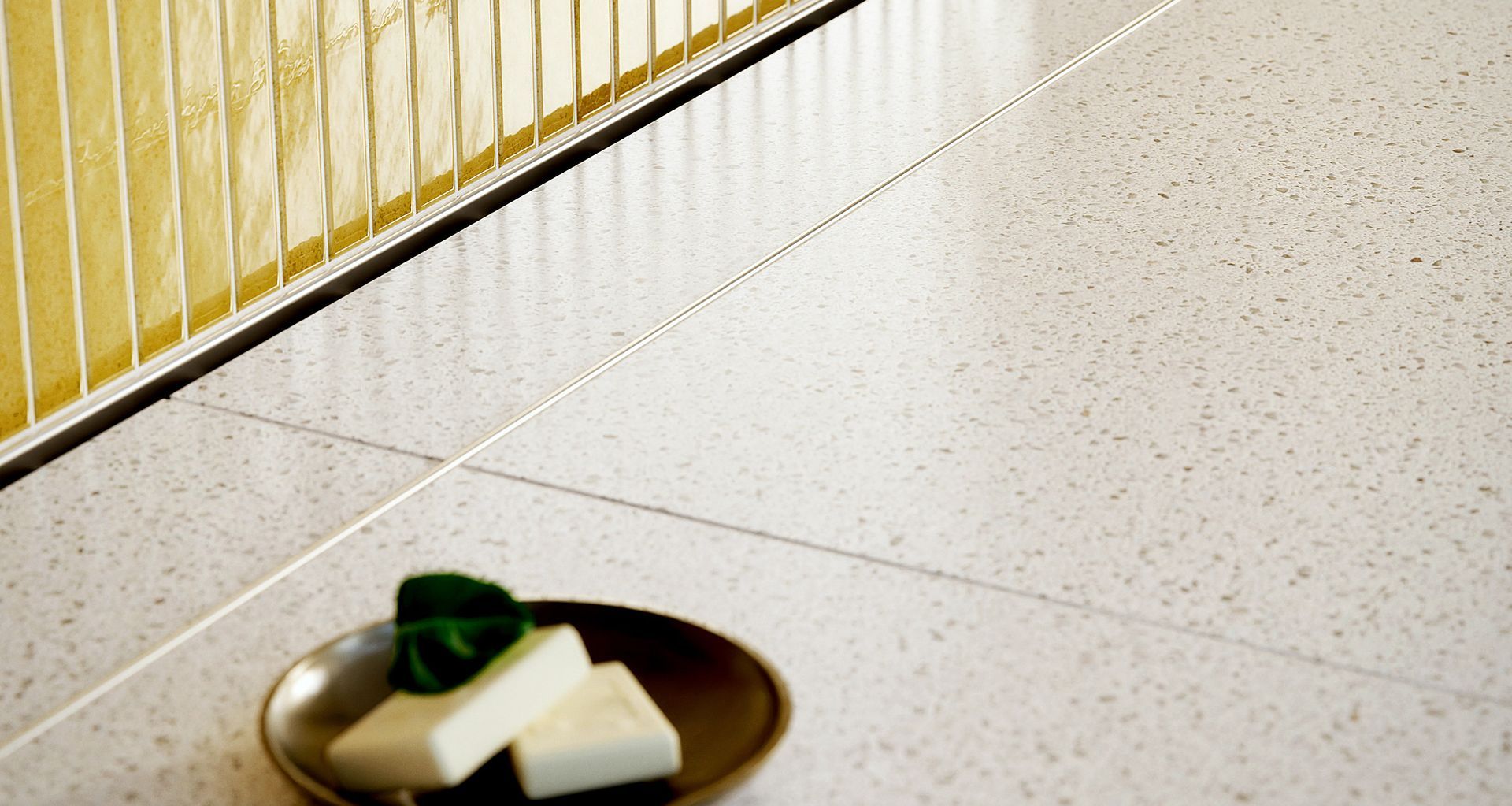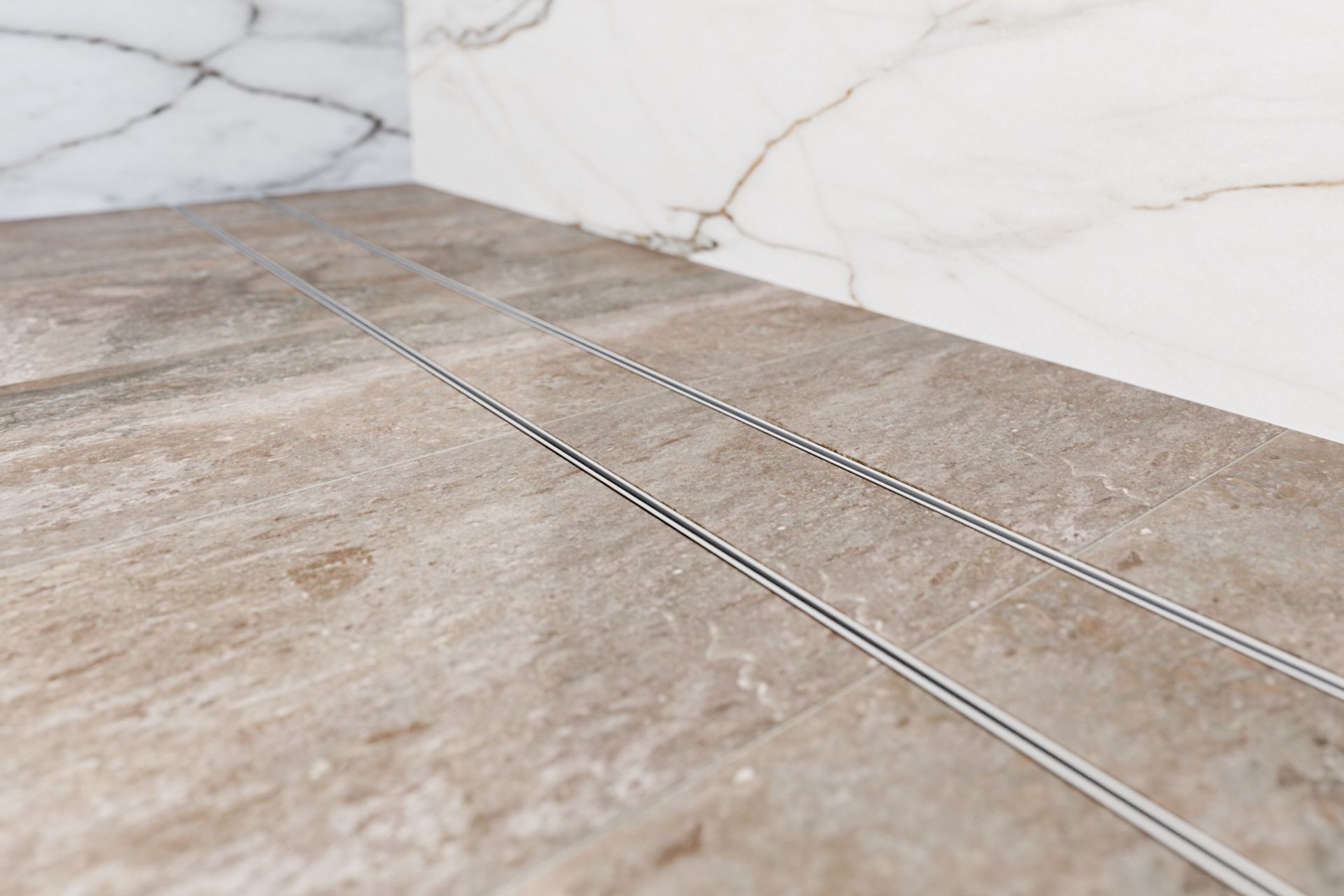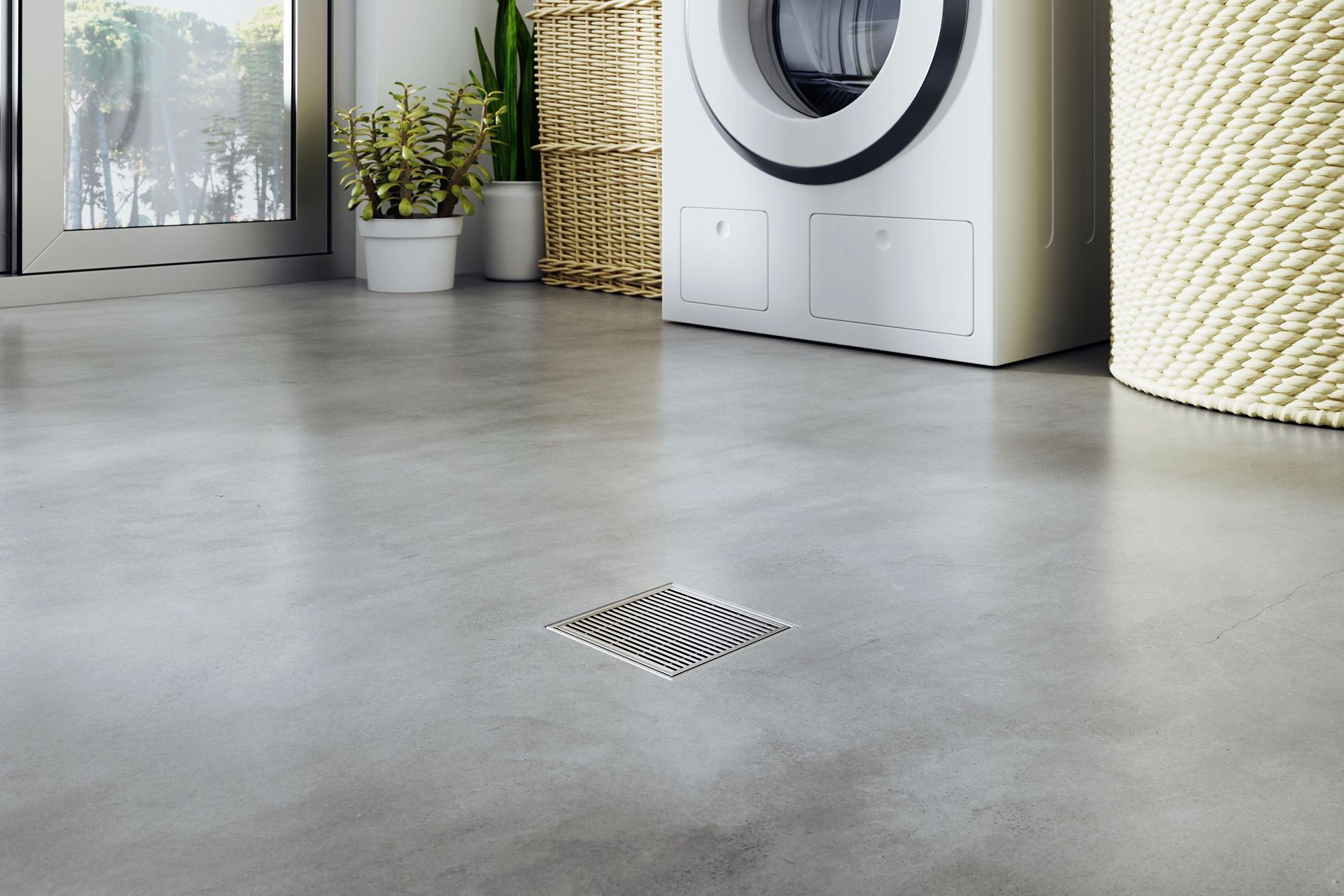Architectural drainage 101: Key principles every designer should know
Written by
16 September 2025
•
4 min read

Proper drainage protects spaces against water damage and the associated remediation time and cost. Equally, for designers and trades, it can protect against damage to relationships and reputations.
To better understand how drainage can both support aesthetic requirements and safeguard against damage, we spoke to Stormtech’s Nick Moore, who shares how architectural drainage solutions defend against mould, support accessibility, and elevate design.
Options for interior drainage
Today’s designers have more choice than ever when specifying drains, with different systems suiting different functional and aesthetic needs.
“Stormtech’s wide range of floor drains for internal wet areas allows designers a great degree of design flexibility. Our products include the slimline linear drain, shower screen support drain, square floor wastes and wall and floor flange drains, and each offers a unique set of benefits.”
- Slimline linear drain – The classic linear shower channel is a versatile option that can fit seamlessly into most designs, pairing a streamlined aesthetic with a practical drain solution.
- Shower Screen Support Drain – “It offers dual-sided drainage from both sides of shower glass, allowing an entire bathroom to be drained through a single floor waste. A perfect choice for wet room bathroom designs and designs that promote accessibility.”
- Square floor wastes – “While linear drainage offers many design benefits over a standard central floor waste, Stormtech’s square floor wastes offer a modern and luxurious option that matches and complements linear drain styles.”
- Wall and Floor flange drains – “They offer a compliant installation hard against walls, allowing an unobtrusive integration and simplifying fall requirements.”

Avoiding common mistakes
Even when the right drain is specified, practical details are sometimes missed, warns Nick.
“Don’t overlook maintenance! Cleaning and servicing bathroom drains can be a tiresome chore for homeowners, but the drain is part of the floor and should also be cleaned every time the floor is. While simplified cleaning is a key benefit of linear drainage, it can be made difficult when designs don’t consider maintenance access.”
One challenge is long tile insert grates: “While these are a very popular choice because of their seamless look, long grate sections can be very difficult to lift when filled with tiles. For this reason, Stormtech provide inserts in multiple sections for channel lengths longer than 1.2m.”
Designers should also ensure clearance under fixtures like vanities to allow easy access for servicing.
Another overlooked principle is simplicity. Using a bathroom as an example, Nick suggests layouts with fewer waterproofing penetrations: “Not only does this create less points of potential failure, it also simplifies waterproofing, tiling and allows a greater freedom of tile selection. A linear drain can potentially run across the entire room, covering a large surface area. Using a single linear drain will potentially require only two planes of fall in the floor surface, a much more preferable outcome for those with disability or mobility impairments who may require the use of supportive aids.”

Seamless integration into design
Far from being a disruption to a scheme, drainage can actively support design intent.
“Selecting the right drainage can add to your design; for example, a linear drain simplifies achieving fall and eliminates the need for changes in flooring level or raised shower hobs. As such, they offer a flush, level flooring finish and more freedom to open up spaces. In wet room design, this combination creates a larger feeling space than when using smaller tile or cutting tiles to suit complex falls.”
Because drainage can have significant practical and aesthetic implications, it should not be a late-stage detail to be tacked on, shares Nick.
“Drainage should be an important consideration from the schematic design stages and becomes even more important during design development. Consideration of water management should be an important part of determining the overall layout and flow of a space, and the relevant engineers and consultants should be engaged early on to determine site-specific requirements.”
Good drainage should disappear into the architecture, not disrupt it. When done well, it safeguards health, protects investment, and enhances the design. As Nick shares: “Specifying the right drainage and partnering with a trusted drainage supplier such as Stormtech can have many benefits in ensuring drainage installation aligns with design intent and construction drawings.”
Explore architectural drainage solutions by Stormtech